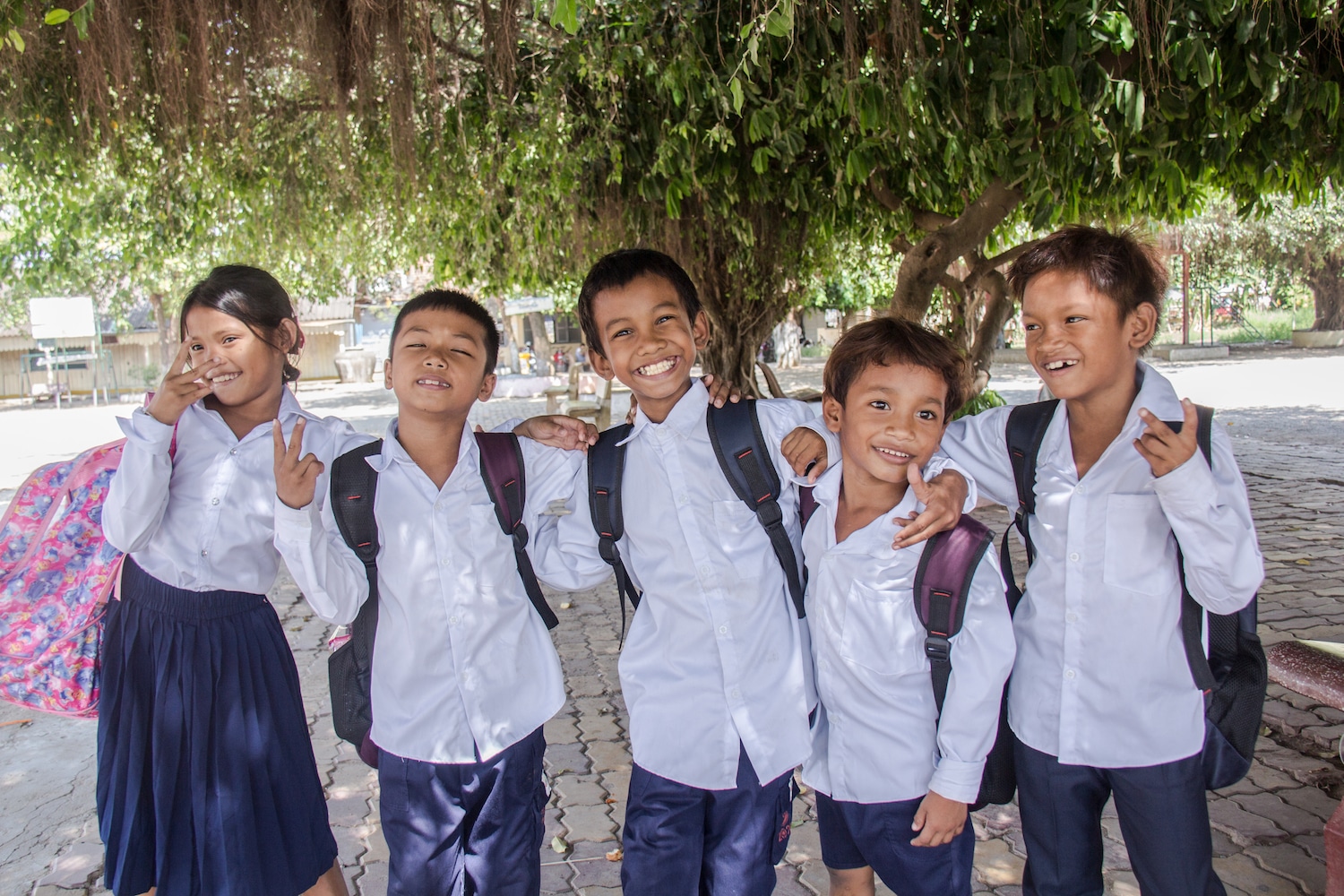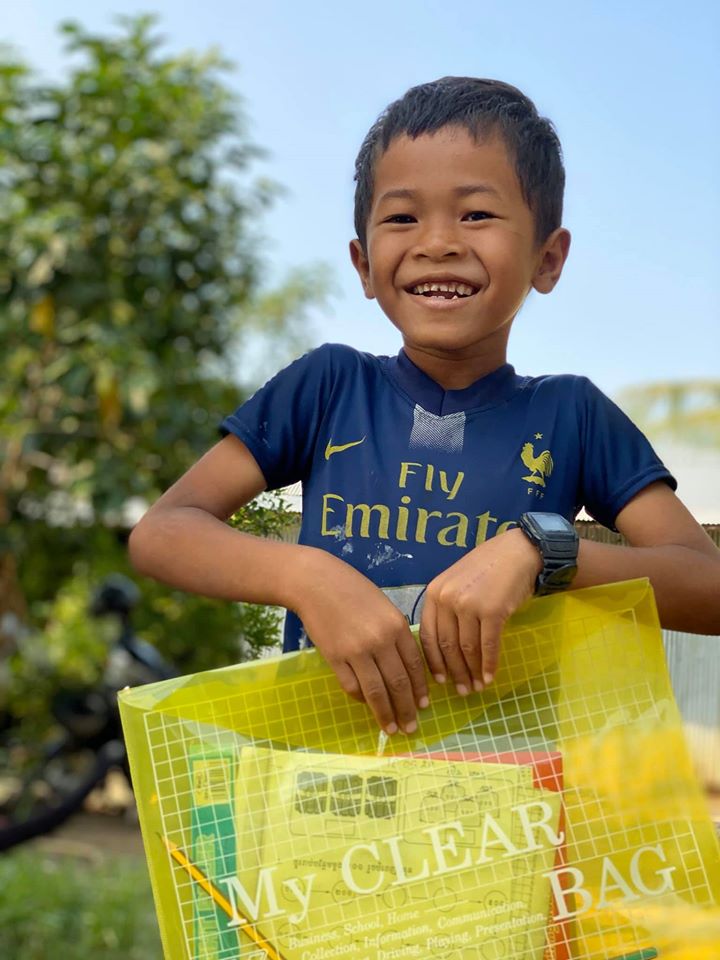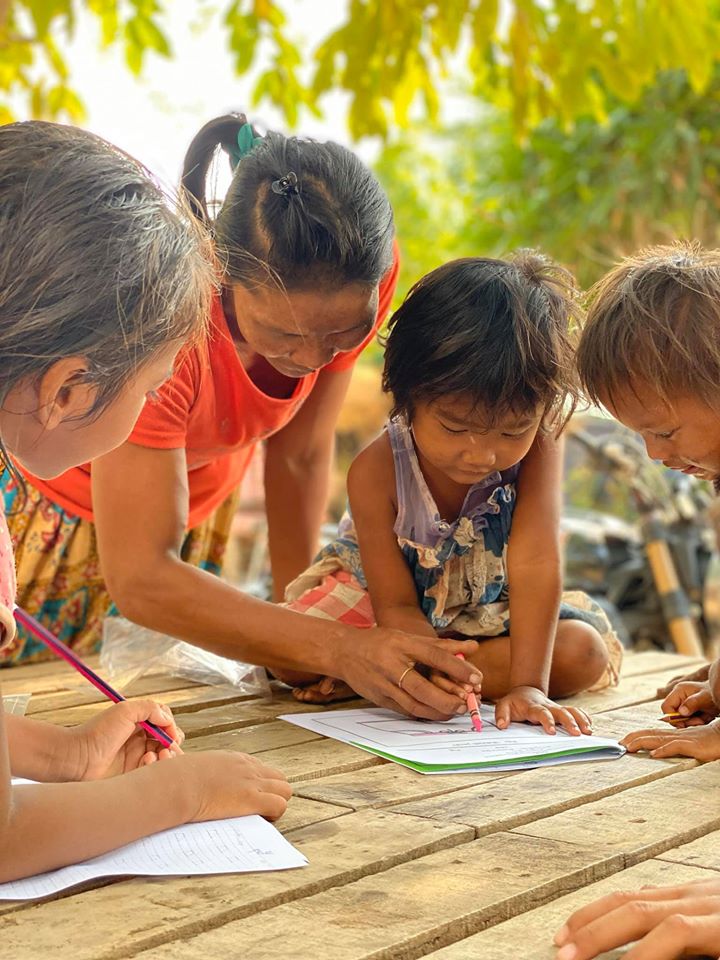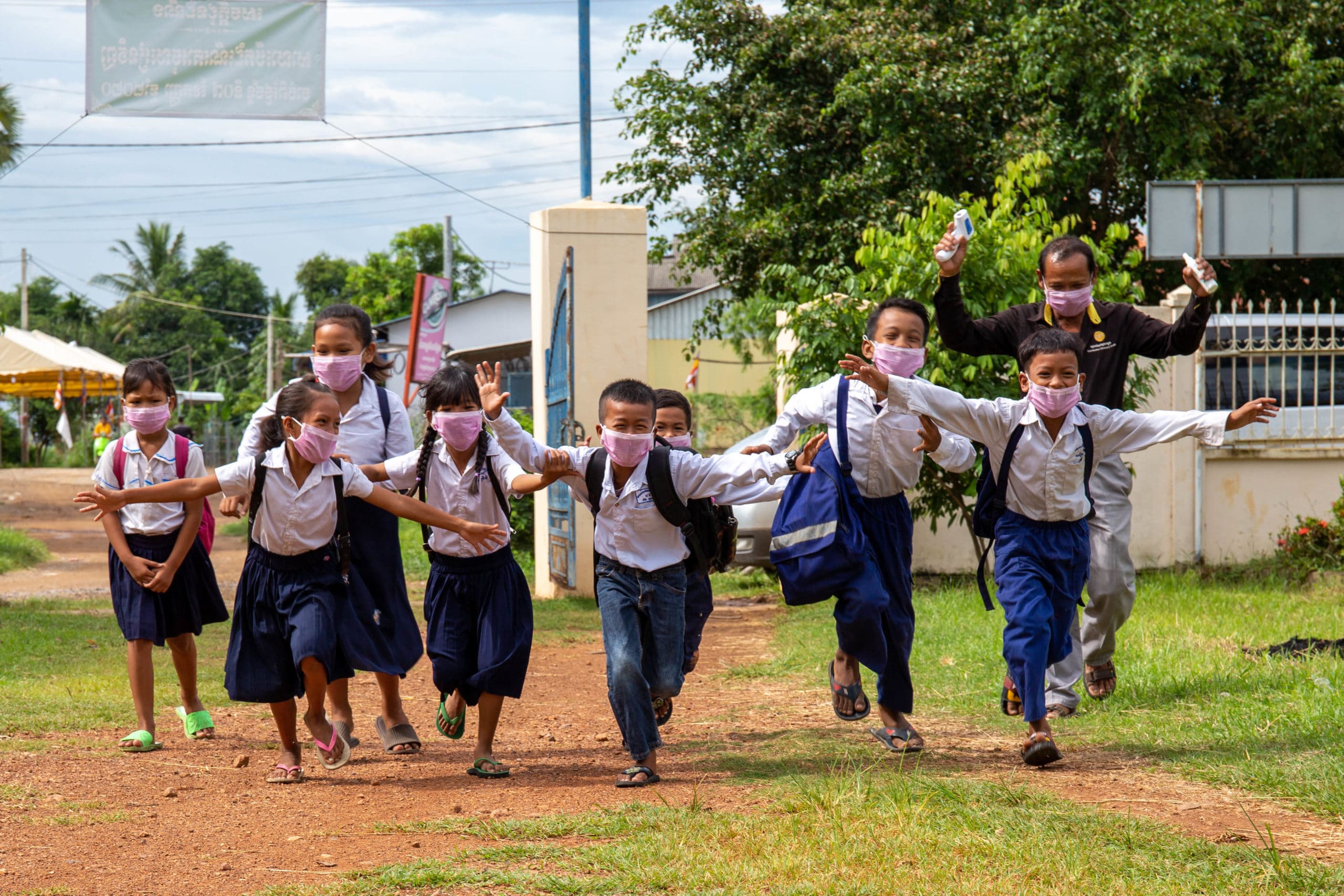How can we ensure the next generation of Cambodians are empowered to address and solve the problems within their own families and communities?
Education.
When young people access basic quality education, they have the power to lift their families, communities and country out of the grip of poverty. If children aren’t afforded this basic human right, the implications on their future, and their children’s future, is irreversible.
Cambodia’s education system was essentially eradicated during the Khmer Rouge Regime in the 1970s. Books were burnt, teachers were killed, universities were destroyed and an estimated 90 percent of schools were destroyed. Since then, the country has had to work hard to build its education system from the ground up and some extraordinary progress has been made. The number of children enrolled in primary education increased from 82 percent in 1997 to 97 percent in 2018.
Yet, there are still many Cambodian children who don’t have the opportunity to go to school. For those growing up in poverty or orphanages, it can be extremely challenging to access basic quality education.
When vulnerable families are struggling to put food on the table, extra money to pay for their children’s education isn’t always available. Although education in Cambodia is meant to be free, children still require school uniforms, shoes, backpacks, textbooks and transport to and from school. On top of this, because public school teachers are underpaid in Cambodia, they often teach a portion of their classes out of school hours. These are considered private classes which the students need to pay to attend. If they don’t, they will usually not pass their exams.
Without an education, vulnerable children are destined to remain trapped in the intergenerational cycle of poverty. CCT’s Village Hive model combats this issue. It brings education into vulnerable communities, ensuring all children are afforded their right to education.
Families know that education is vital for breaking the intergenerational cycle of poverty. Over thirteen years working with vulnerable families in Cambodia, we’ve heard time and time again that a lack of access to education is a key driver in families entrusting their children to orphanages.
To build the capacity of vulnerable families, our Village Hive model brings counselling, medical care, financial literacy coaching, income generation services, and access to education into communities. This holistic support strengthens families and empowers them to provide for their children, thereby preventing vulnerable children from falling into the orphanage system.
The first step in helping children access basic quality education involves CCT village-based social workers, who partner with vulnerable families to provide education-related needs and ensure their children attend public school regularly. Social workers equip families with school uniforms, shoes, backpacks, textbooks, school supplies and will assist with transportation to and from school. CCT social workers will also ensure children can attend tutoring classes with their public school teachers, ensuring vulnerable children do not fall behind their peers.

While CCT social workers are supporting vulnerable families to work towards financial independence, the parents will often enrol their children into a CCT Youth Centre. Our Youth Centres are there to ensure children can access their basic needs within their own community.
The Youth Centres play a vital role in ensuring the needs of all school-aged students are met until families are financially robust and can cover the costs themselves. The following services are delivered from the Youth Centres:
We are currently working with local councils in communities across Battambang to embed our Youth Centres within the local primary school systems. Embedding a Youth Centre into a public primary school also ensures that all school-aged children in the community have access to clean water, toilets, hygiene and sanitation facilities – which are not always available in Cambodian public schools.
After children are enrolled in our Youth Centres, CCT staff work to enrol them in public school or public preschool. In Cambodia, many vulnerable children don’t have birth certificates. CCT social workers will often spend a lot of time supporting families to create birth certificates and any other documents that children need to enrol in school.
Some of the children who are enrolled in our Youth Centres have never been to school or are far behind their peers. Teachers from the Youth Centre provide extra tuition classes for the children so they have the educational support they need to catch up to their age-appropriate grade. For the children who decide to leave high school, CCT social workers partner with them to find vocational training in a field they are interested in.
In 2014, computer literacy was so low in Battambang City that the majority of students were graduating grade 12 without even basic computer literacy, leaving them without the skills necessary to navigate an increasingly digital world.
In 2015, CCT partnered with Grok Learning and the Atlassian Foundation to trial a different approach; we worked together with the public high schools in Battambang City to co-design an ICT education program.
Today this ICT curriculum has been fully incorporated into the public curriculum. It is run entirely by the school’s administration and wholly funded by the Cambodian Ministry of Education.
This project has achieved something remarkable: true sustainability. Read more about the success stories that have come out of this program in the past 5 years.
When Kaka was first enrolled in one of our Battambang Youth Centres, CCT staff quickly realised she was non-verbal. Enrolling Kaka in a regular public school was no longer an option. But the Youth Centre staff had a plan…
Nine-year-old Lyhour had never missed classes in the past, so when he stopped attending school regularly his teachers contacted CCT’s Village-based social workers. Through practical support and a long-term plan towards self-sufficiency Lyhour’s family can continue to send him and his five cousins to school.
When the COVID-19 pandemic swept through the country, the Cambodian government made the decision to close schools down until it was safe for children to congregate again.
During these six months, our Youth Centre teams dedicated themselves to ensuring their students continued to have the same opportunities, delivering hot meals along with homeschooling packs every day. They even offered extra in-home tuition to the students who needed it, ensuring they didn’t fall behind.

Schools have just reopened in Cambodia, so these kids can start going back to the Youth Centre after their school hours to get homework help and access extra educational resources from our teachers whenever they need.


A solid educational foundation is a key factor in overcoming intergenerational poverty. Ensuring children living in poverty are able to access their right to education isn’t as simple as enrolling them into school. It is vital that a holistic approach is taken to empower the whole family, untangling the complex web of poverty and ensuring that there are no barriers to children attending school and thriving in class. When the right support is given to families and the community networks that surround them, a whole world of opportunity opens and children are able to thrive.